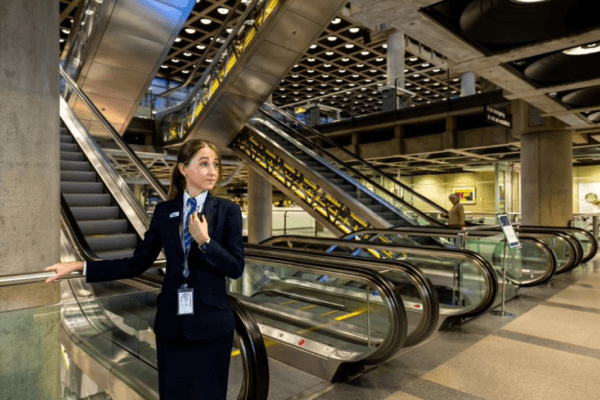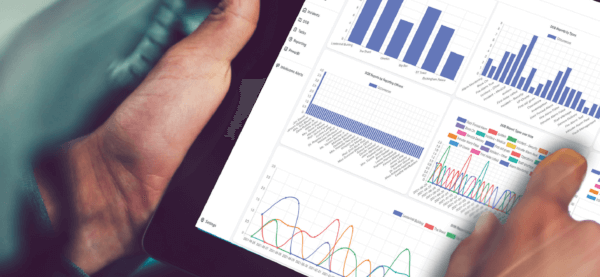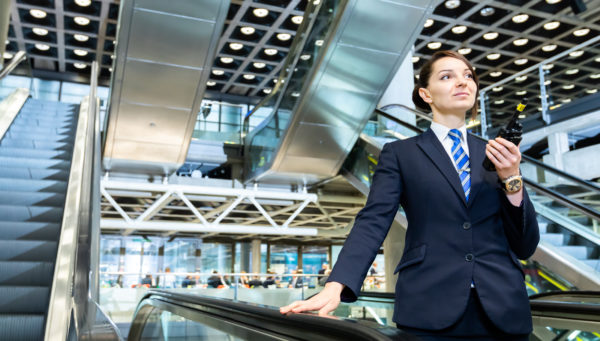How to protect your lone workers
The Health and Safety Executive (HSE) defines lone workers as “those who work by themselves without close or direct supervision.” We typically think of roles like out-of-hours security guards, in industrial locations, and of sectors like healthcare, where health workers could be making house visits alone.
However, for some, lone working might be a small, but regular, part of their role. For example, delivery drivers or paramedics might feel at risk when leaving the safety of their vehicle in unfamiliar settings. Similarly for staff travelling home alone after a late-night shift.
Employers have a responsibility to protect their staff and make sure they feel supported. If your staff fall into the lone worker category, whether it’s full-time or just occasionally, what steps are you taking to keep them safe?
Here are some things to consider and ideas on supporting your lone workers.
The challenges of lone working
Working alone doesn’t necessarily mean higher risks of violence or incidents, but it does mean that your staff may feel more vulnerable if there’s no obvious support nearby.
Some staff, like shift-workers who may not be in the office during normal working hours, could be working in near-empty buildings late at night. In the event of unauthorised access to your building, or aggression from an intruder, your staff need the systems in place to support them and get help without compromising their safety.

Lone workers based off-site, like engineers working in isolated locations, won’t have colleagues nearby to help if they encounter a threat like an environmental hazard or a medical emergency. They will need to be able to alert colleagues to the problem, even if they’re incapacitated, and get help quickly.
What can you do to keep your lone workers safe?
As an employer you must be fully aware of the risks that your lone workers could face and do everything you can to manage them. That includes putting measures in place, and giving them the tools, to support them in the event of an incident. Also, working in isolation can have an impact on mental health and wellbeing so it’s important to make sure your lone workers feel supported in this respect.
Conduct a risk assessment
A thorough risk assessment is important for employees working alone, and not just those in the workplace. Your assessment should look at all types of risks that your lone workers could be exposed to, in their situation, and should include how and when they travel to and from site.
The Health & Safety Executive has published guidelines on the types of risks that may be involved in lone working, covering physical health, mental health, and issues around high-risk settings.
Make sure your workplace is safe and secure
Put comprehensive measures in place, like monitoring and personal alarms, to make sure that lone workers are kept safe, and that a quick response can be deployed if needed. Make sure that your lone workers know the risks to look out for and are trained so that they can confidently deal with new or unusual incidents. At the very least, they should know where to go and who to contact in an emergency.
Keep up-to-date records of daily work schedules, itineraries, and key contacts, so that you know who, and where, your lone workers are at any given moment.
Use technology-based solutions for your lone workers
Invest in the technology that will give your lone workers peace of mind, while keeping them safe. For example, a shift worker heading home at 3am, might feel safer knowing that they can be monitored to their front door, if they choose.
Mitie’s Security team uses smart technology and remote monitoring to keep lone workers safe, on behalf of its customers, and provides support in the event of an emergency. Our remote monitoring and alarm receiving centre alerts customers, if an alert is received, and will send out a mobile patrol if there’s no response from the lone worker.

Our solutions include smartphone apps and specialised devices like emergency call buttons, for immediate alerts, and motion or shock sensors that might trigger in a fall. And, with GPS-enabled devices, with multi-network SIM connectivity for areas with poor reception, lone workers can feel protected wherever they are.
Encourage regular feedback
It can be hard to predict where potential issues may arise if your staff don’t flag them, especially if there’s pressure to get the job done and move on to the next one. Make sure that any incidents or concerns are properly reported so you can learn from them and put in actions to prevent reoccurrence. Also, in your regular team meetings, and one-to-one chats, encourage feedback on areas of concern to keep a proactive attitude to lone worker protection.
How Mitie can help you protect your lone workers
If you’re looking for a lone worker protection system, Mitie is here to help. We are one of the largest suppliers of lone worker safety and protection services in the UK. With our support, organisations across many sectors are deploying effective lone worker protection systems.
Our lone worker protection services provide the technology and processes that help to create a safe working environment. Our services include lone worker risk assessments, proactive protection via heartbeat monitors, reactive protection with ‘push for help’ and, thanks to our BS 8484 Lone Worker Standard accreditation, a guaranteed police response if required.
With our technology led solutions, you can be sure that all your workers are safe and secure, whenever they are alone.
To find out how we can help your business, get in touch with the team today to discuss your specific priorities and requirements.
Read next

What are the best office security systems?
In this article, we’ll explore the essentials in office security systems, and the latest innovations that can help your organisation deliver robust protection. The essentials in office security Specific office security requirements and priorities…

Why you might need a mobile security team
Businesses need to stay on the front foot when it comes to keeping their people, property and assets safe, especially from theft, damage, vandalism or other criminal activities. Robust protection must be balanced against…
Are you ‘Protect Duty’ Prepared?
Protect Duty is a piece of new government legislation designed to provide better protection from terrorism for the British public, and is expected to come into force in 2023. The policy aims to create…